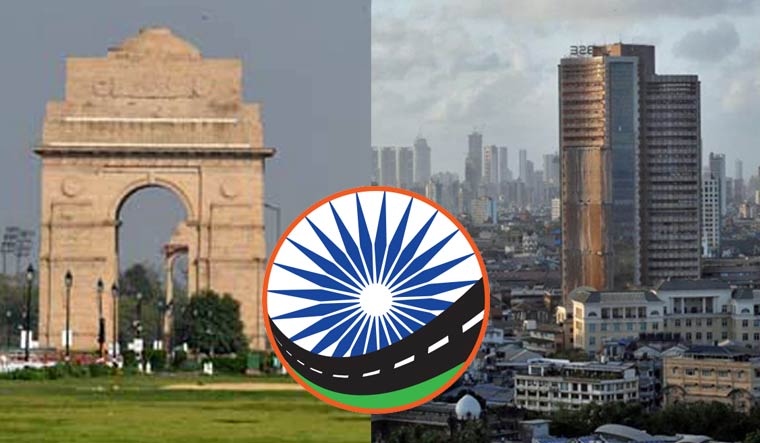Delhi to Chandigarh in two hours! Mumbai to Goa in five hours!
All these breathless promises of speeding through the countryside on access-controlled super lanes fade in front of the big daddy in the superhighway scheme of things—a zip-zap-zoom Delhi-Mumbai expressway that promises to bring down the travel time between the two biggest nerve centres of Indian business and trade by half.
Only, however, if the National Highways Authority of India (NHAI) can deliver the goods without crumbling under its own weight.
On paper, NHAI, an autonomous govt agency, is revving to pedal it down the fast lane. Its pan-India projects range from expressways connecting urban hubs to peripheral roads to rid metros of congestion, as well as dedicated goods corridors for faster movement of freight. Fitting into this scheme of things is the government’s ambitious Bharatmala Pariyojana, which envisages a network of roads and highways spanning over 83,000km. Its original cost estimate of Rs 5.35 lakh crore makes it the single largest outlay for a government road construction scheme. The Golden Quadrilateral project, compared to this, sounds like child’s play.
“This is only a trailer,” union minister for highways and road transport Nitin Gadkari had exulted recently referring to the push for the highway networks.
“Web of expressways in this part of the country including the Delhi-Mumbai one will transform the way people will travel on roads," he added.
Despite being insulated because of its sarkari credentials, the NHAI has its share of woes, financial and otherwise. Its spiralling debt and cost overruns are acutely worrisome. Doubts have even been cast on its projected traffic volumes on upcoming projects. And controversy seems to be a constant companion in almost everything it does—right from corruption allegations, run-ins with both E-way concessionaires and locals, environmental clearances and of course, land acquiring.
The latest is the parting of ways with the National Infrastructure Investment Fund (NIIF) this weekend. The two government bodies had come together just a year ago with great fanfare and after long deliberations, hoping to collab on finding fresh modes for funding the Delhi-Mumbai Expressway project. The special purposes vehicle (SPV) formed by the two bodies was supposed to explore ways to get investment into India’s infrastructure, ranging from domestic equity, debt financing to even roping in foreign investors.
However, a year down the line, it is now clear that things have not worked out the way it was hoped by Gadkari, who had himself inaugurated the SPV last summer.
In special focus is the big question—is the Delhi-Mumbai E-way not commercially viable? And why is the NIIF not confident about the project? NIIF’s statement, saying "The infrastructure body will continue to support NHAI to develop…commercially viable financing structure" raises exactly that doubt.
NHAI, on its part, feels it can act faster with its own SPV, to be called Delhi Mumbai Expressway Development Limited, wholly owned by NHAI, which will raise debt on its balance sheet and get annuity payments based on the revenue (read: tolls) raised by NHAI. The construction, operation and maintenance will be done directly by NHAI.
The Delhi-Mumbai E-way project is the crown jewel in the government’s ambitious highway push.
The nearly 1,300km greenfield 8-lane highway will link up the two metro cities through Haryana, Rajasthan, Gujarat and Maharashtra, passing through a few backward regions (which, the govt hopes, will catalyse development there) and cut down travel time between the two hubs from 24 hours to just 12. Along with the concurrent Delhi-Mumbai industrial corridor, authorities have reiterated that the E-way is crucial for achieving PM Modi’s target of a $5 trillion economy in a few years.
Highway construction in India had scaled up to nearly 30km being paved per day last year before the pandemic forced this rate to drop to 18km. Minister Gadkari has now set an ambitious target of 60km per day, which he says will ensure speedy economic recovery from the shock of the COVID-19 pandemic. But for that, the NHAI must shrug off its bureaucratic style of functioning and step up its game.



